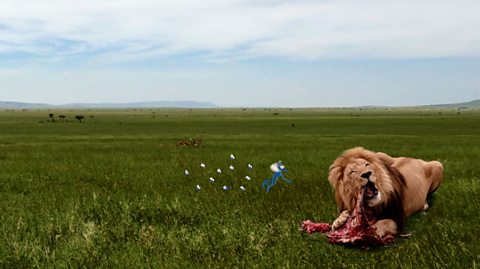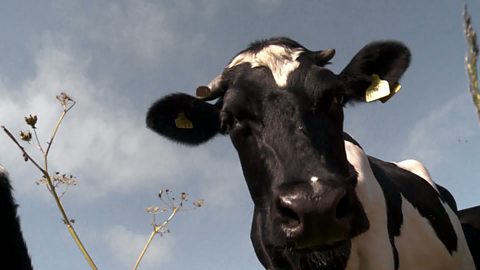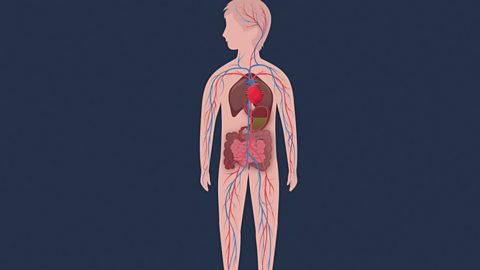How does human digestion work?
Video - How humans digest food
In this video, learn about the human digestive system and what happens to our food when we eat it.
Find out what our human body does with the food that we eat
Follow me please, class.
We’re in this cafeteria to investigate human digestion.
Digestion is a process of food being broken down and absorbed to give the body energy and help it grow.
Since it all takes place inside the body, we’re going to need our virtual biology headsets.
Everyone ready?
Headsets ON!
Welcome to the human mouth, where teeth chew food into smaller pieces and saliva begins to break it down.
Saliva contains digestive enzymes, special molecules that speed up the breaking down of food.
Next stop, the stomach.
Wheeee!
If you travel all the way down the throat you reach the stomach, where chewed food is broken down by more enzymes and stomach acid and gets turned into a sort of liquidy mush.
This mush then passes into the small intestine: a long, squiggly tube, that, if it was unravelled, would measure 10 times the length of the body it comes from.
This is where digestion really gets going, with more large food molecules getting broken down into small food molecules.
Good stuff like proteins, carbohydrates and vitamins get separated out and absorbed into the blood stream through the intestine walls.
The blood then carries them all around the body.
Anything that isn’t absorbed is waste.
This goes into the large intestine, where most of the water gets taken out, leaving – you guessed it – poo!
Settle down class, we’re not going to find any poo in a cafeteria.
Mind you…
Jackpot!
What is digestion?
There are three parts to digestion:
- Breaking food down into smaller and smaller pieces
- Absorbing the things our bodies need
- Getting rid of the waste our bodies can’t use
How do we digest food?
For humans, cooking food is a way of making it easier to digest. Imagine trying to eat hard, raw rice or potatoes!
Mouth
Teeth break food into smaller pieces and grind it up. Water in saliva helps turn food into a soft paste that is easier to swallow. Saliva also contains chemicals called enzymes. These break the food down into smaller molecules.
When we swallow, food travels down the throat through the oesophagus to the stomach.
Stomach
The stomach churns food around. More enzymes and acids break the food down even more. The acid can kill microorganisms that might make you ill. After about four hours in the stomach, food moves into the small intestine.
Small intestine
The walls of the small intestine are able to absorb the proteins, carbohydrates, fats and vitamins we need. These pass into your bloodstream and are carried around the body to where they are needed.
Learn about the role of protein, carbohydrates, fats and vitamins in our diet here: The food groups
Large intestine
Next is the large intestine which mostly absorbs water. This leaves waste called faeces that your body can’t absorb.
This is stored in the rectum until you are ready to push it out of your anus when you go to the toilet.
Quiz
More on Body systems
Find out more by working through a topic
- count2 of 25

- count3 of 25

- count4 of 25
